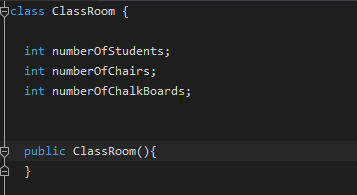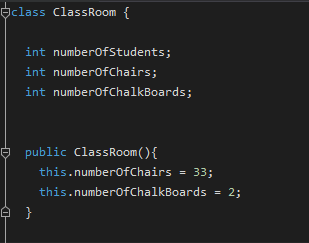# Understanding Java Constructors: A Comprehensive Guide
Written on
Chapter 1: Introduction to Constructors
In this guide, we delve into the concept of constructors in Java. If you're unfamiliar with the previous tutorial, I highly recommend reviewing it for a clearer understanding of this topic.

What are Constructors?
Constructors are specialized methods that initialize objects. But what does this entail? To clarify, a method, as outlined in our function guide, is a defined block of code designed to perform a specific action. Therefore, a constructor's primary role is to facilitate the creation of an object. Let’s look at a constructor to visualize its functionality.

The Default Constructor
The default constructor is akin to a standard method. However, it bears the same name as its class, such as “classRoom.” This naming convention enables the compiler to recognize it as a default constructor. When left without parameters, it is labeled a default constructor. Moreover, even if we do not explicitly define a constructor, the compiler generates one automatically when the code runs, albeit it does not have a significant impact.
Now, let's discuss the practical applications of constructors.
Chapter 2: Setting Up Constructors
Imagine a scenario where a client from the school board wants a specific number of chalkboards and chairs in each classroom. This is where constructors come into play.
The default constructor allows us to assign these values within its body. Consequently, every time a new “ClassRoom” object is created, it automatically incorporates the preset values. This method, which lacks parameters, is referred to as the default constructor since it executes a standard behavior.

The Normal Constructor
Constructors also enable the dynamic assignment of values during object creation, eliminating the need for separate getter and setter methods. This practice enhances data flow and simplifies code readability. Ideally, use parameters whenever feasible to streamline your code.
Let’s look at an example of a non-default constructor.

The key distinction between the default and normal constructors is that the latter includes parameters for value assignment. You might wonder how the program differentiates between the two, given that they share the same name. Fortunately, there’s no need to alter their names. The compiler recognizes a constructor by its identical name to the class. It determines which constructor to invoke through a process known as method overloading.
Understanding Method Overloading
I won’t delve deeply into method overloading, as it relates to the foundational principles of object-oriented programming, which will be discussed later. For now, it's crucial to understand that this concept allows us to use the same name for different methods, provided their parameters differ. The compiler selects the appropriate method based on the parameters supplied during object creation.
That's a fundamental overview of constructors. If you found this guide helpful, please take a moment to clap, follow, and subscribe to my newsletter to stay updated with future posts.
Wishing you a fantastic day!
In the tutorial "Java Constructors - Full Tutorial - YouTube," you will gain a deeper understanding of the various types and functions of constructors in Java.
The video "How To Use A Constructor in Java #74 - YouTube" provides practical examples and best practices for utilizing constructors effectively in your Java projects.